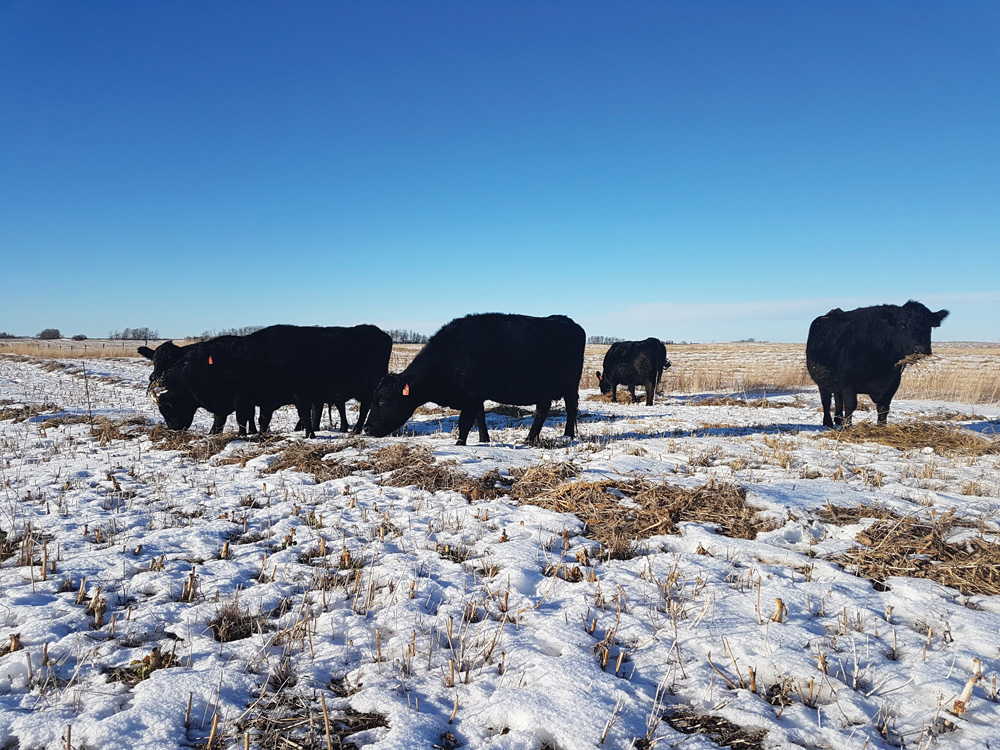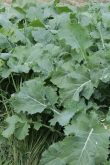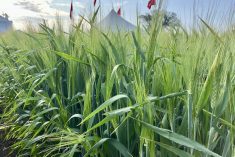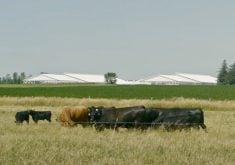Those wondering about polycrop potential to sequester carbon, improve soil health and benefit animal performance will have some answers by the fall of 2019 thanks to research underway at the University of Saskatchewan.

Jacqueline Toews, a graduate student in the College of Agriculture and Bioresources, is halfway through a two-year study comparing the costs and benefits of swath grazing barley and swath grazing a polycrop. Toews grew up on a grain farm and commercial cattle operation near Glaslyn, Sask. She recently received a $17,500 scholarship from the Natural Sciences and Engineering Research Council for her study.
“Cattle producers are being marketed polycrops as a silver bullet that’s going to fix everything,” Toews said. “It’s very important that we evaluate polycrops from the soil health aspect and look at it from both production and economic standpoints. A shift to polycrops needs to make money to make sense for a producer.”
Toews is comparing a Union Forage Ultimate Annual Blend with 40-10 forage peas to CDC Maverick barley. Dry pregnant beef cows are swath grazing both treatments. Toews and her colleagues are measuring body weight and body condition scores using ultrasound measurements of rib and rump fat on a five-point scale. They are calculating the cost per cow per day for both treatments. Researchers are also measuring forage yield and quality. Quality is measured at swathing, before grazing and at the end of each grazing year.
Read Also
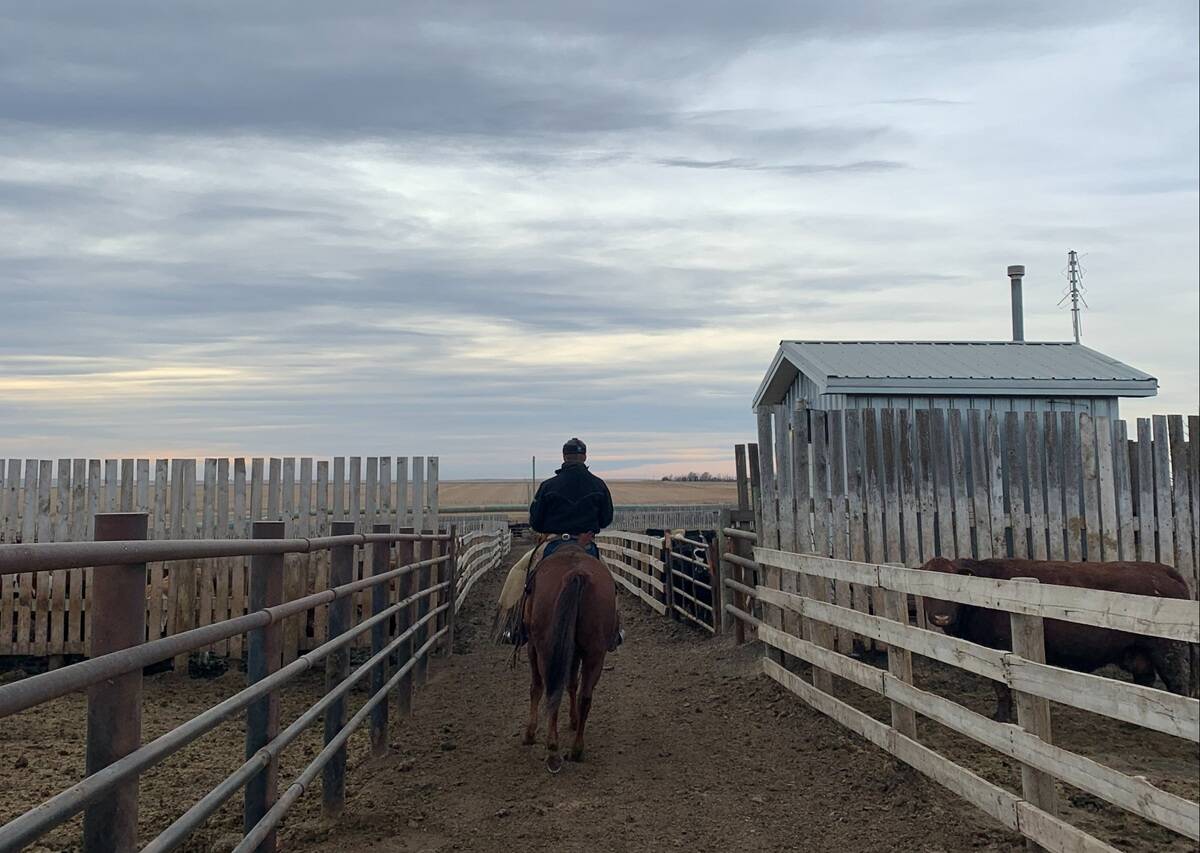
Pen riders still better than tech at detecting respiratory disease in feedlot cattle, says researcher
Recent research found that pen riders are better than tech at flagging signs of BRD in feedlot cattle
Toews is also looking at several soil health indicators, including changes in bulk density, moisture, nutrient supply, pH, electroconductivity and soil structure. Soil carbon is being measured through changes in percent of total organic carbon, water soluble organic carbon and nitrogen. Researchers are measuring soil at the start and end of the trial and between years.
Toew’s research is primarily based at the Termuende Research Ranch at Lanigan, but Alan Iwaasa is also conducting the trial at Agriculture and Agri-Food Canada’s research site at Swift Current. The Termuende Research Ranch was formerly known as the Western Beef Development Centre. It’s now part of the University of Saskatchewan’s new Livestock and Forage Centre of Excellence. Toews said the 300-head cow herd will be moved to the Clavet site in 2019.
Toews is also working with U of S beef cattle researcher Bart Lardner, who is the principal investigator, and soil scientist Jeff Schoenau. The Saskatchewan Agriculture Development Fund supports the project as well.
Toews expects to have results publicly available by the fall of 2019. In the meantime, she does have a few preliminary observations.
“Weed management was a significant issue in my polycrop and is an important management consideration for producers wishing to use polycrop mixtures,” she says.
Toews recommends feed testing when using annual polycrop mixes, as her cows needed energy supplementation in extremely cold weather.
Toews also notes the industry needs more multi-year studies on annual polycrop mixtures. She’d like to see more research looking at the whole system, including the interactions between soil, plants, cattle and economics.
Once published, Toews’ research will be one of the first peer-reviewed studies in Western Canada examining the effects of grazing polycrops.


